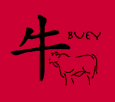
El Día Escolar de la No-violencia y la Paz (DENIP) fue declarado por primera vez en 1964. Surge de una iniciativa pionera, no gubernamental, independiente, y voluntaria de Educación No-violenta y Pacificadora del profesor español Llorenç Vidal. Su objetivo es la educación en y para la tolerancia, la solidaridad, la concordia, el respeto a los Derechos Humanos, la no-violencia y la paz. En este día, los colegios y centros se convierten en instrumentos de paz y entendimiento entre personas de distinta formación, etnia, cultura y religión.
El mensaje básico de este día es: ’Amor universal, No-violencia y Paz. El Amor universal es mejor que el egoísmo, la No-violencia es mejor que la violencia y la Paz es mejor que la guerra’.
El DENIP fue reconocido por el Ministerio de Educación y Ciencia, mediante la Orden Ministerial del 29 de noviembre de 1976. Posteriormente también fue reconocido por la ONU.
El día 30 de enero se conmemora además la muerte del líder nacional y espiritual de la India, el Mahatma Gandhi en 1948, asesinado a tiros por un fanático hinduista. Aquí encontrarás su biografía.
Y aquí, algunas propuestas de actividades sobre la Paz. Y aquí otras

30th January was established as School Day of No-Violence and Peace in 1964 by Llorenç Vidal, a Spanish teacher whose main purpose was education for tolerance, solidarity, respect for Human Rights and no violence. On this day, schools and educational centers everywhere focus on peace and understanding among people from different backgrounds, ethnics, cultures and religions.
The main message is: "Worldwide love, no violence and peace. Worldwide love is better than selfish ambition, no violence is better than violence and peace is much better than war"
The date was recognized by the Spanish Board of Education in 1976. Later on, it was also considered by the United Nations Organisation.
On January 30th we also commemorate Mahatma Gandhi's death in 1948, victim of a fanatic hinduist. Here you can find his biography.
And here some activities to work on Peace. And some others here.




